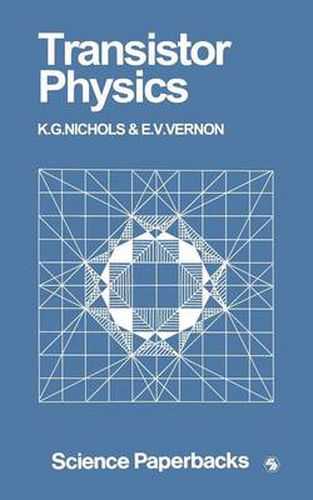Readings Newsletter
Become a Readings Member to make your shopping experience even easier.
Sign in or sign up for free!
You’re not far away from qualifying for FREE standard shipping within Australia
You’ve qualified for FREE standard shipping within Australia
The cart is loading…






This title is printed to order. This book may have been self-published. If so, we cannot guarantee the quality of the content. In the main most books will have gone through the editing process however some may not. We therefore suggest that you be aware of this before ordering this book. If in doubt check either the author or publisher’s details as we are unable to accept any returns unless they are faulty. Please contact us if you have any questions.
This book is intended as an introduction to the application of physical theory to the study of semiconductors and transistor devices. The book is based on lecture courses given by the authors to second and third year honours students in the Electronics Department of Southampton University, England. Some elementary knowledge of physics, circuit theory, and vector methods is assumed. The book deals almost exc1u sively with the theoretical aspects, but references are given to experi mental work. The first two chapters discuss c1assical atomic theory and quantum mechanical applications to electron energy levels in atoms, in particular the hydrogen atom, and in one-dimensional crystalline solids leading to the distinctions between metals, insulators, and semiconductors. Chapter 3 deals with statistical mechanics in some detail, so that the reader can appreciate the historical background leading to the Fermi Dirac statistics for electrons in metals and semiconductors, and in chapter 4 these statistics are applied to determine the current carrier density in various types of semiconductor. Equations for drift and diffusion currents are obtained in chapter 5, and the results applied to uiliform and graded impurity semiconductors in chapter 6. Current flow across p-n junctions is analysed in chapter 7, and the p-n-p transistor theory is developed in chapter 8. The discussion is limited to p-n-p transistors, but similar results apply for the n-p-n transistor.
$9.00 standard shipping within Australia
FREE standard shipping within Australia for orders over $100.00
Express & International shipping calculated at checkout
This title is printed to order. This book may have been self-published. If so, we cannot guarantee the quality of the content. In the main most books will have gone through the editing process however some may not. We therefore suggest that you be aware of this before ordering this book. If in doubt check either the author or publisher’s details as we are unable to accept any returns unless they are faulty. Please contact us if you have any questions.
This book is intended as an introduction to the application of physical theory to the study of semiconductors and transistor devices. The book is based on lecture courses given by the authors to second and third year honours students in the Electronics Department of Southampton University, England. Some elementary knowledge of physics, circuit theory, and vector methods is assumed. The book deals almost exc1u sively with the theoretical aspects, but references are given to experi mental work. The first two chapters discuss c1assical atomic theory and quantum mechanical applications to electron energy levels in atoms, in particular the hydrogen atom, and in one-dimensional crystalline solids leading to the distinctions between metals, insulators, and semiconductors. Chapter 3 deals with statistical mechanics in some detail, so that the reader can appreciate the historical background leading to the Fermi Dirac statistics for electrons in metals and semiconductors, and in chapter 4 these statistics are applied to determine the current carrier density in various types of semiconductor. Equations for drift and diffusion currents are obtained in chapter 5, and the results applied to uiliform and graded impurity semiconductors in chapter 6. Current flow across p-n junctions is analysed in chapter 7, and the p-n-p transistor theory is developed in chapter 8. The discussion is limited to p-n-p transistors, but similar results apply for the n-p-n transistor.